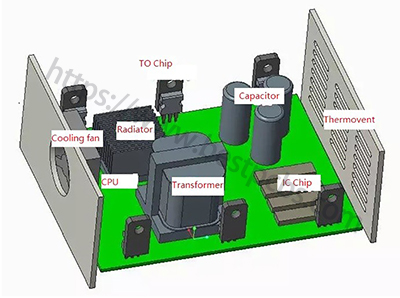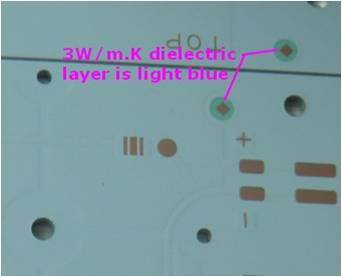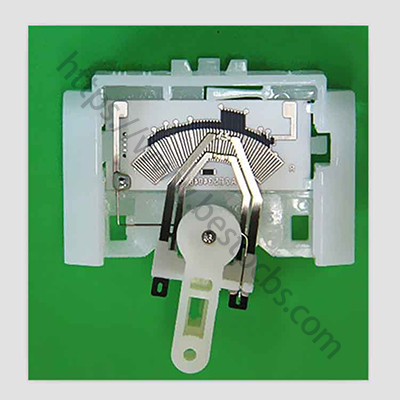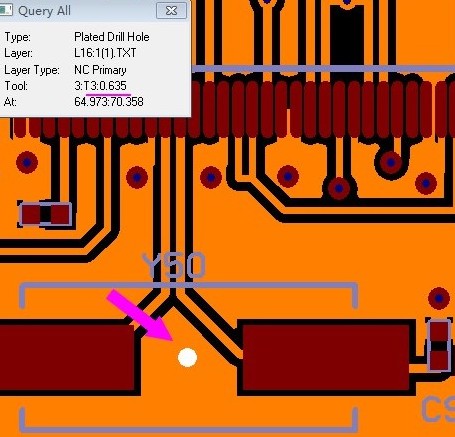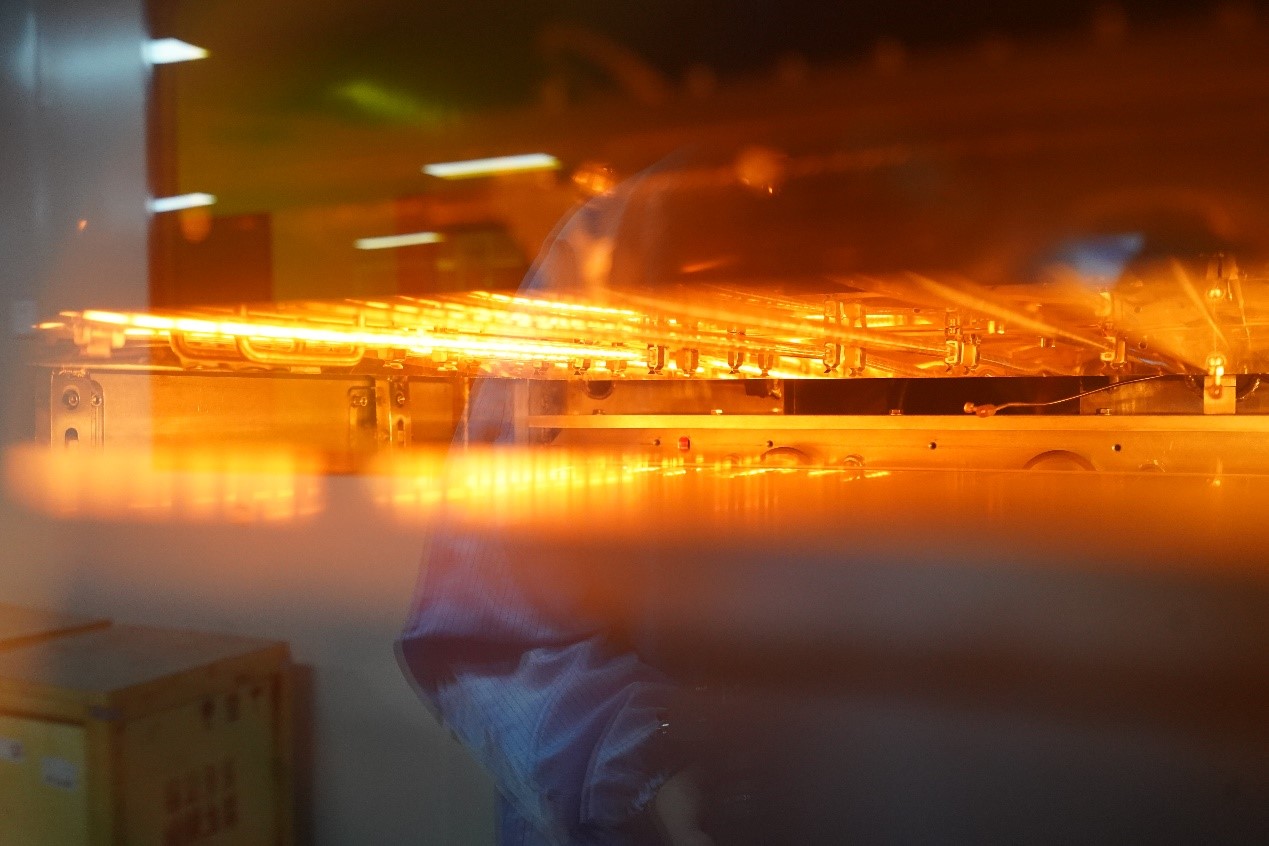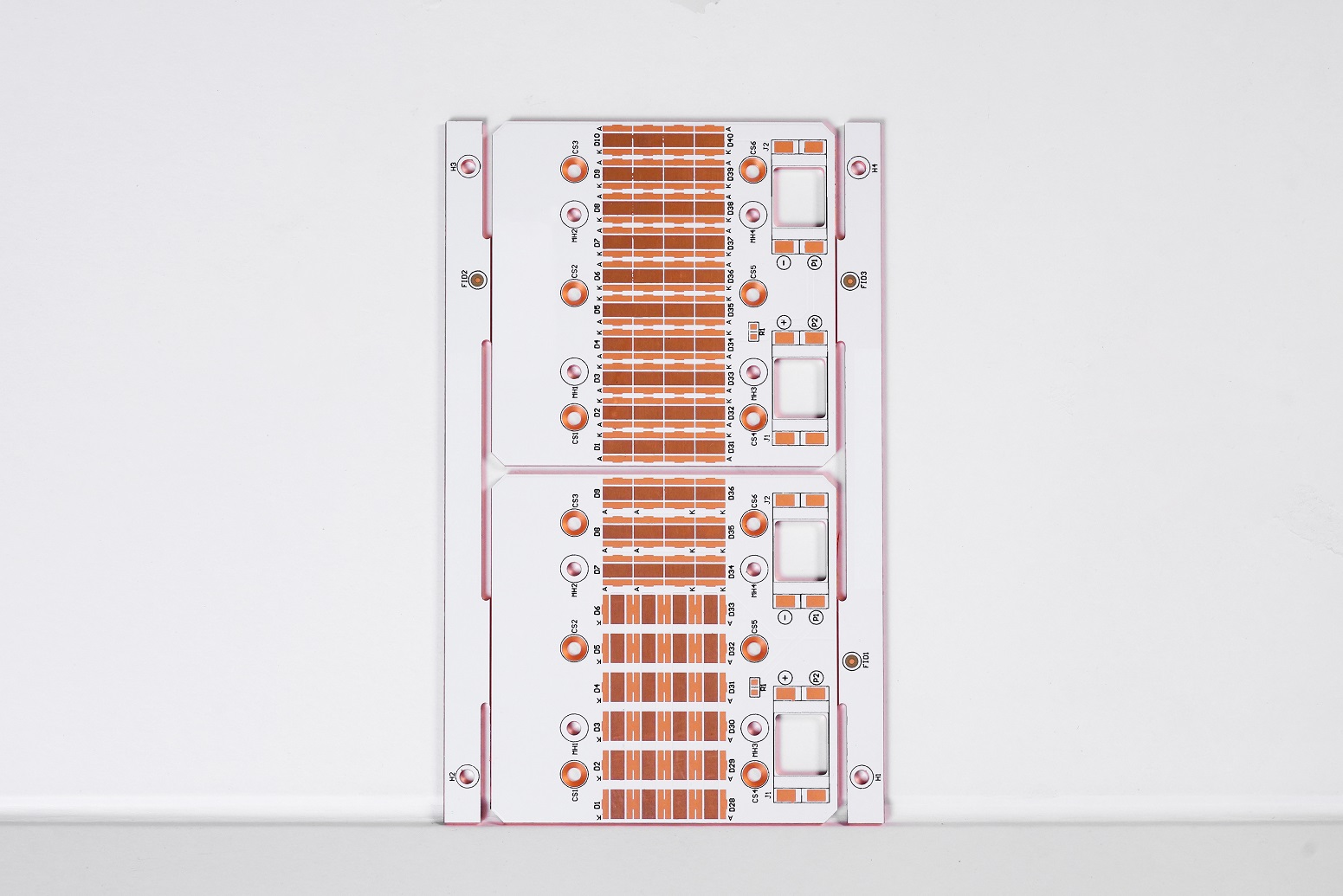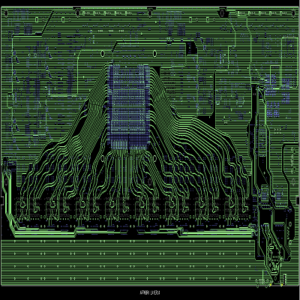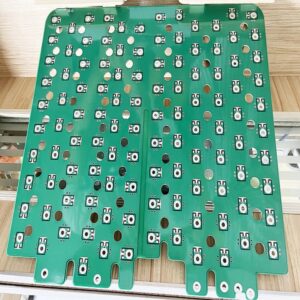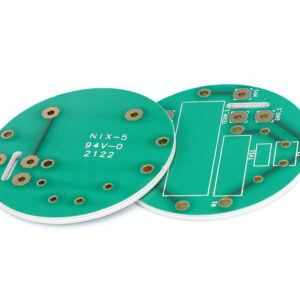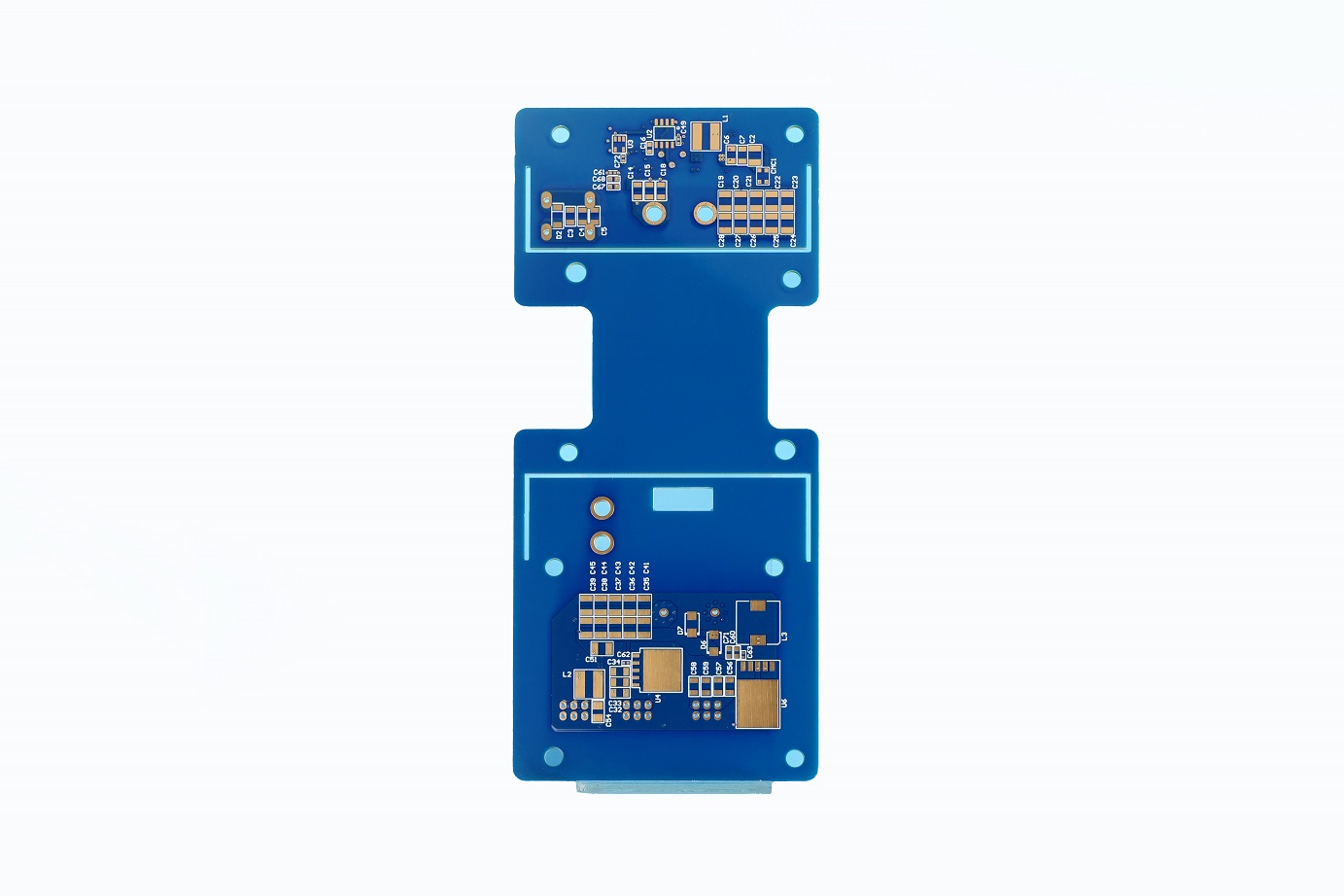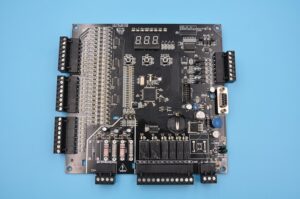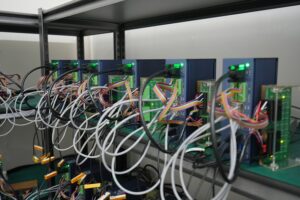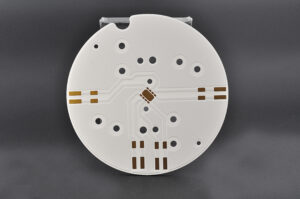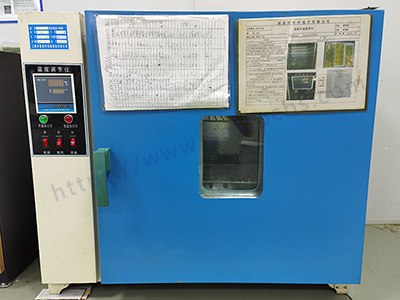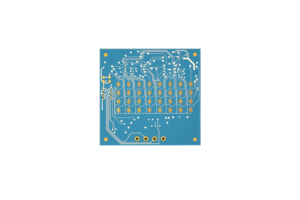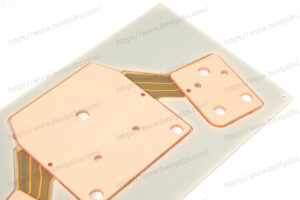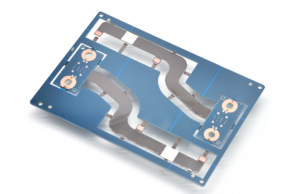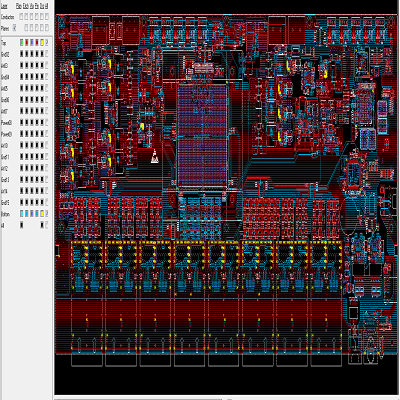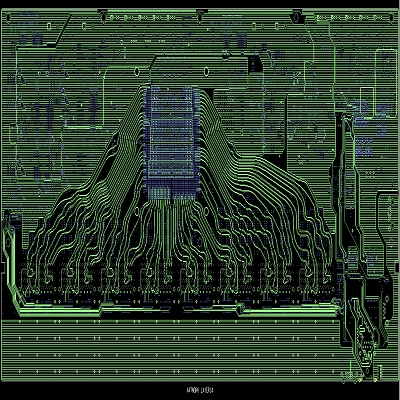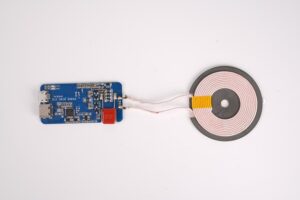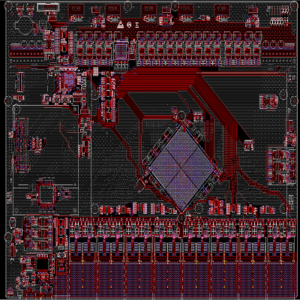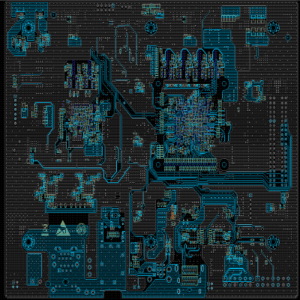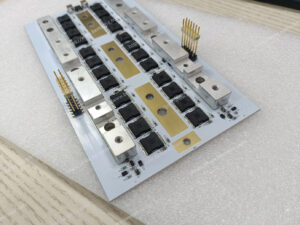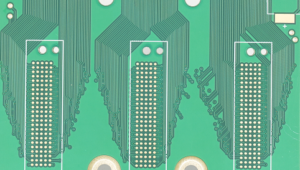Best Technology is the professional manufacturer of pcb led,led light pcb,led pcb board,led light circuit board,led light pcb,led light pcb board, full turn-key service in China, with more than 18 years of experience, always reply within 12 hours, with best service at good price.
Archive for the ‘Metal Core PCB’ Category
Metal core printed circiut boards are used where a large of heat are generated in the circuit, and the heat needs to be dissipated quickly to avoid overheat. These boards offer good thermal conductivity and dimensional stability. The aluminum core can reduce the overall weight of your board.
What is Metal Core Printed Circuit Board?
A metal core printed circuit board (MCPCB) is a type of PCB that incorporates a metal core, usually aluminum or copper, as its base material. This core helps to enhance the board’s thermal management capabilities. Unlike traditional PCBs made of fiberglass (FR4), MCPCBs are designed to dissipate heat more effectively, making them ideal for applications where heat dissipation is crucial.
MCPCBs are also referred to as insulated metallic substrate (IMS), or insulated metal PCBs (IMPCB), thermal-clad PCBs. A typical metal core PCB is made of thermal insulating layer (dielectric layer), metal base and copper foil.
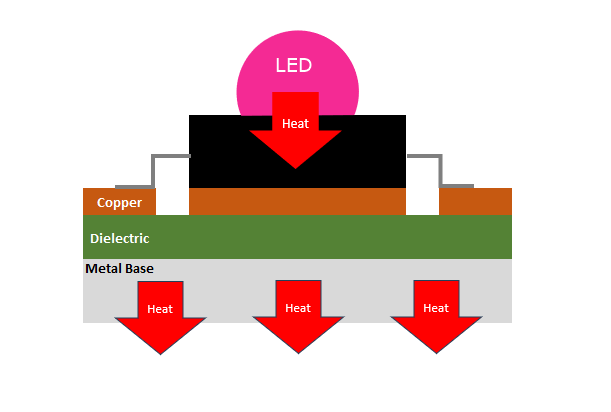
The basic constructure of a metal core circuit board includes:
- Silkscreen
- Solder mask (S/M)
- Circuit layer (copper foil layer)
- Dielectric layer
- Metal core base
What are Metal Core PCBs Used For?
Metal core PCBs are popular because of its good thermal management. It utilizes in various applications that demand efficient heat dissipation and high thermal performance. Here are some common applications that metal core printed circuit board will be used in.
- LED lighting
MCPCBs are widely used in LED lighting systems due to their excellent thermal management properties. LEDs generate a significant amount of heat, and metal core PCBs help to dissipate this heat effectively, ensuring longer lifespan and consistent performance of the LEDs.
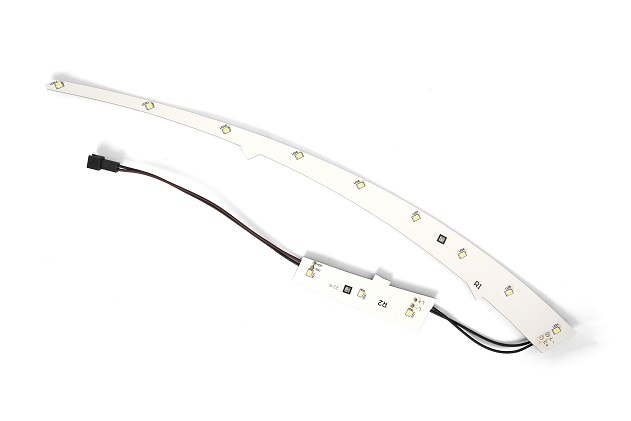
- Power supplies
High-power supply units benefit from MCPCBs as they can handle the heat generated by power components. This helps in maintaining the stability and efficiency of the power supply over time.
- Automotive electronics
In the automotive industry, MCPCBs are used in various electronic control units (ECUs), lighting systems, and other high-power applications. The robust nature of MCPCBs makes them suitable for the harsh conditions experienced in automotive environments.
- Industrial equipment
Industrial machinery and equipment that operate under high temperatures or require high power output use MCPCBs for their thermal management capabilities. This ensures the reliability and longevity of the equipment.
- Telecommunications
Telecommunications equipment, such as base stations and routers, use MCPCBs to manage the heat generated by high-speed and high-frequency operations, ensuring uninterrupted performance and reliability.
- Consumer electronics
High-performance consumer electronics, including laptops, smartphones, and gaming consoles. They install with MCPCBs to manage heat and improve device performance and lifespan.
What are the Advantages of Metal Core PCB?
Metal core PCBs are preferred for several reasons, primarily revolving around their superior heat dissipation capabilities and mechanical strength. Here are some main advantages of metal core PCBs.
- Superior thermal management
- Mechanical strength
- Compact design
- Enhanced performance
- Improved reliability
- Higher recyclability
- Cost Efficiency
- Dimension stability
- Size reduction
- Longer lifetime
What Metal is Used in PCBs?
The choice of metal in PCBs significantly affects their thermal and mechanical properties. The most commonly used metals in MCPCBs are aluminum and copper. Here’s a closer look at these materials:
Aluminum
- Thermal Conductivity: Aluminum has a thermal conductivity of approximately 1.0 to 2.0 W/mK, making it an excellent material for heat dissipation.
- Cost-Effective: Aluminum is relatively inexpensive compared to other metals, making it a cost-effective choice for many applications.
- Lightweight: Aluminum is lighter than copper, which can be beneficial in applications where weight is a concern.
- Corrosion Resistance: Aluminum naturally forms a protective oxide layer, enhancing its resistance to corrosion.
Copper
- Thermal Conductivity: Copper has a higher thermal conductivity than aluminum, ranging from 3.0 to 5.0 W/mK, providing superior heat dissipation.
- Electrical Conductivity: Copper is also an excellent conductor of electricity, which can improve the electrical performance of the PCB.
- Durability: Copper is more durable and resistant to wear and tear compared to aluminum, making it suitable for more demanding applications.
- Higher Cost: Copper is more expensive than aluminum, which can increase the cost of the PCB but is justified in applications requiring superior performance.
Other Metals
In some specialized applications, other metals like stainless steel or alloys might be used, but these are less common due to their specific properties and higher costs.
What is the difference between FR4 PCB and Aluminum PCB?
Aluminum PCB is a material based on aluminum base material, coated with an insulating layer and other conductive layers on the aluminum base material. FR4 is a glass fiber reinforced laminate, made of multi-layer fiber cloth and resin composite. In the following, we will introduce the difference between aluminum substrate and FR4 in terms of thermal conductivity, mechanical strength, manufacturing difficulty, application range and thermal expansion coefficient.
1. Aluminum substrate has good heat dissipation, and its thermal conductivity is about 10 times that of FR4.
2. The mechanical strength and toughness of the aluminum substrate are better than FR4, which is suitable for installing large components and making large-area pcb boards.
3. The production of aluminum substrate requires more process steps, and its production process is more complex than FR4, and the production cost is higher than FR4.
4. The aluminum substrate is suitable for high-power electronic products such as LED lighting, power supplies, inverters and solar inverters, and FR4 is suitable for low-power electronic products such as televisions, telephones and electronic game consoles.
5. The thermal expansion coefficient of aluminum substrate is close to that of copper foil, which is smaller than that of FR4, which is good for ensuring the quality and reliability of the circuit board.
How to Design Metal Core PCB?
Designing a metal core PCB is a complex process that includes several crucial steps. During the design, we should ensure the board meets the thermal, electrical, and mechanical requirements of the application. Below is a detailed guide to the MCPCB design process.
1. Define the Application Requirements
Before starting the design process, it’s essential to clearly define the requirements of your application. This includes understanding the thermal, electrical, and mechanical needs of the project. Determine the maximum operating temperature and the amount of heat that needs to be dissipated, ensuring the MCPCB can handle the thermal load effectively. Specify the electrical characteristics such as current load, voltage levels, and signal integrity requirements to ensure the board can deliver the necessary performance.
2. Select the Core Material
As mentioned above, there are two common metal materials used in this industry: aluminum alloy and copper core. They have unique characteristics and properties when used in device. So. choosing the appropriate metal core material is crucial for the performance of your electronic device. This table provides a side-by-side comparison of aluminum alloy and copper core materials, helping to choose the appropriate material when designing MCPCBs.
| Property | Aluminum | Copper |
| Thermal Conductivity | 1.0 – 2.0 W/mK | 3.0 – 5.0 W/mK |
| Electrical Conductivity | Lower than Copper | High |
| Weight | Light | Heavy |
| Cost | Lower | High |
| Mechanical Strength | Good | Excellent |
| Corrosion Resistance | Natural Protective Oxide Layer | Requires Additional Protection |
| Thermal Expansion Coefficient | Higher | Lower |
| Machinability | Good | More Difficult |
| Environmental Impact | Recyclable | Recyclable |
| Application Areas | LED Lighting, Consumer Electronics, High-Performance | Electronics, Industrial Equipment |
3. Determine the Layer Stack-Up
The layer stack-up defines the arrangement of the different layers in the PCB. A typical MCPCB stack-up includes:
- Top Copper Layer: The conductive layer where components are mounted.
- Dielectric Layer: An insulating layer that separates the copper layer from the metal core. It has good thermal conductivity to transfer heat from the components to the metal core.
- Metal Core: The central layer made of aluminum or copper, which acts as a heat spreader.
- Bottom Copper Layer (optional): Used in double-sided MCPCBs for additional routing of traces.
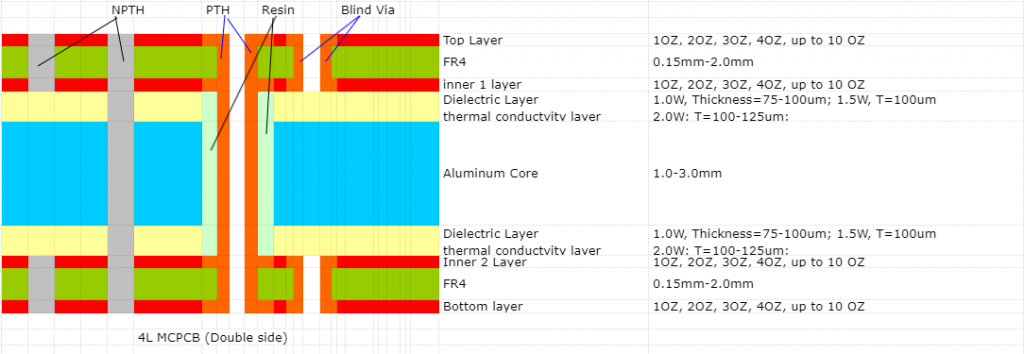
4. Design the Circuit Layout
The circuit layout includes placing components and routing traces on the PCB. Key considerations include strategically placing heat-generating components to ensure efficient heat dissipation and keeping sensitive components away from high-heat areas. Trace routing should minimize electrical interference and maintain signal integrity, using wider traces for high-current paths to reduce resistance and heat generation. Implementing thermal vias enhances heat transfer from the top copper layer to the metal core by using plated through holes that connect the copper layer to the metal core, facilitating better heat dissipation.
5. Design for Manufacturability (DFM)
Ensuring that your design can be efficiently manufactured is critical. Maintain adequate clearances between traces, pads, and other features to meet MCPCB manufacturing capabilities and avoid short circuits. Use standard drill sizes to reduce manufacturing complexity and cost. Apply a solder mask to prevent solder bridges and protect the copper traces from oxidation. Use clear and legible silkscreen markings for component identification and assembly instructions. You can communicate with your supplier and ask for a capability chart, so that can save much time on design phase.
6. Prototype and Test
Once the design is validated, create a prototype of the MCPCB and conduct thorough testing. Measure the actual thermal performance under operational conditions to verify the simulation results. Test the functionality of the PCB in the intended application environment to ensure it meets all performance requirements. Conduct reliability tests such as thermal cycling, vibration testing, and humidity testing to assess the durability of the MCPCB.
Best Technology – A Leading MCPCB Manufacturer in Asia
With 18+ years of experience in the PCB industry, Best Technology has a deep understanding of the complexities involved in MCPCB production. Our team of experts is adept at designing and manufacturing MCPCBs that deliver optimal performance. Best Technology offers customized turn-key solutions tailored to the specific needs of our clients. Whether it’s a unique design requirement or a specific material preference, we provide flexible options to meet diverse demands.
Contact Best Technology, get your quote right now to make your own metal core circuit boards!
You may also like
Posted in best pcb, bestpcb, Design Guide, FAQ, mcpcb, Metal Core PCB, PCB News, SinkPAD | No Comments »
In our daily life, the electronics has been gradually infiltrated our lives. Between them, the PCB board plays an important role in it, and we must say, PCB is the foundational element of electronics. From the simplest gadgets to the most complex machinery, PCBs play a crucial role.
What is a PCB Board?
A printed circuit board (PCB) is an electronic that uses metal conductors to create electrical connections between components. Generally, a PCB is a flat, laminated composite made of non-conductive substrate materials with conductive pathways etched or printed onto it. These pathways, also known as traces, enable the electronic components mounted on the board to communicate with each other.

PCBs are designed to support and electrically connect various components such as resistors, capacitors, diodes, and integrated circuits. The intricate network of copper tracks forms circuits that dictate the device’s functionality. PCBs can range from simple single-sided boards used in basic electronics to complex multi-layered structures found in advanced applications.
Common PCB Structure
A PCB’s structure is composed of several key layers, each serving a distinct purpose. Here is a detailed breakdown of these layers:
Substrate (Base Material)
The substrate, usually made of fiberglass (FR4), provides the board with its rigidity and thickness. It is the foundational layer upon which all other materials are built.
Copper Layer
This conductive layer is typically made of copper foil. For single-sided PCBs, the copper layer is only on one side of the substrate, whereas double-sided and multi-layer PCBs have copper layers on both sides or between multiple layers of substrate.
Solder Mask
The solder mask is a protective layer applied over the copper traces to prevent oxidation and accidental short-circuiting. It insulates the copper traces and leaves the component pads exposed for soldering. The green color commonly associated with PCBs comes from this layer, though it can also be found in other colors like red, blue, black, and white.
Silkscreen
The silkscreen layer is used to add labels, symbols, logos, and other markings to the PCB. This layer helps in identifying component locations and orientations during assembly and troubleshooting.
Components and Connectors (PCBA)
Components such as resistors, capacitors, diodes, and integrated circuits are soldered onto the PCB. Connectors allow the PCB to interface with other boards, power supplies, and external devices.
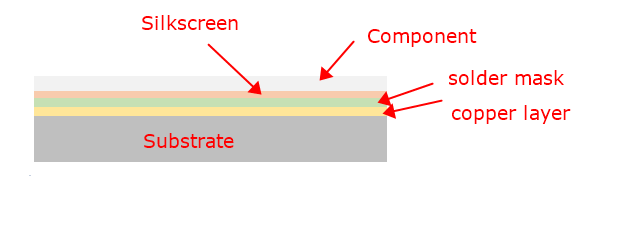
How Many Types of PCB?
Single-Sided PCBs
These are the simplest types of PCBs, with copper on only one side of the board. You’ll find them in basic, low-cost electronics like calculators, radios, and power supplies. They’re easy to design and manufacture, which keeps costs down and makes them great for straightforward applications.
Double-Sided PCBs
These boards have copper layers on both sides, allowing for more complex circuits. They’re common in more sophisticated electronics like amplifiers, power monitoring systems, and HVAC systems. With increased circuit density and flexible design options, they can handle more complex tasks.
Multi-Layer PCBs
When you need to pack in a lot of circuits, multi-layer PCBs are the way to go. They consist of three or more layers of copper, separated by insulating layers. You’ll see these in high-tech devices like computers, servers, medical equipment, and aerospace electronics. They offer high circuit density, reduced size and weight, and better signal integrity.
Rigid PCBs
Made from solid, inflexible materials like fiberglass, rigid PCBs keep their shape and provide strong support for components. They’re durable and used in everything from simple toys to complex industrial equipment.
Flexible PCBs
These are made from flexible plastic materials like polyimide, allowing them to bend and flex. Perfect for wearable electronics, flexible displays, and compact devices where space is tight. They’re lightweight, can fit into small, irregular spaces, and can handle being bent repeatedly.
Rigid-Flex PCBs
Combining the best of both rigid and flexible PCBs, these are great for devices that need both stability and flexibility, like smartphones, cameras, and medical devices. They save space, reduce the need for connectors and interconnections, and improve reliability.
High-Frequency PCBs
Designed to operate at frequencies above 1 GHz, these are used in communication systems, microwave technology, and high-speed devices. They provide low signal loss and high performance, making them crucial for advanced communication technologies.
Ceramic PCBs
Using ceramic as the substrate material, these PCBs offer excellent thermal conductivity and stability. They’re perfect for high-power applications and environments with extreme temperatures, like LED lighting, power electronics, and aerospace systems. Ceramic PCBs ensure reliable performance in harsh conditions.
Metal Core PCBs
Featuring a metal core, usually aluminum or copper, these PCBs improve heat dissipation. They’re used in high-power applications where efficient thermal management is crucial, such as LED lighting, power supplies, and automotive electronics.
Special PCBs
Bus Bar PCBs
These integrate bus bars for high-current applications, ensuring efficient power distribution and minimal voltage drop. They’re used in heavy-duty power supplies, electric vehicles, and industrial machinery. Bus bar PCBs provide robust and reliable connections for high-power systems.
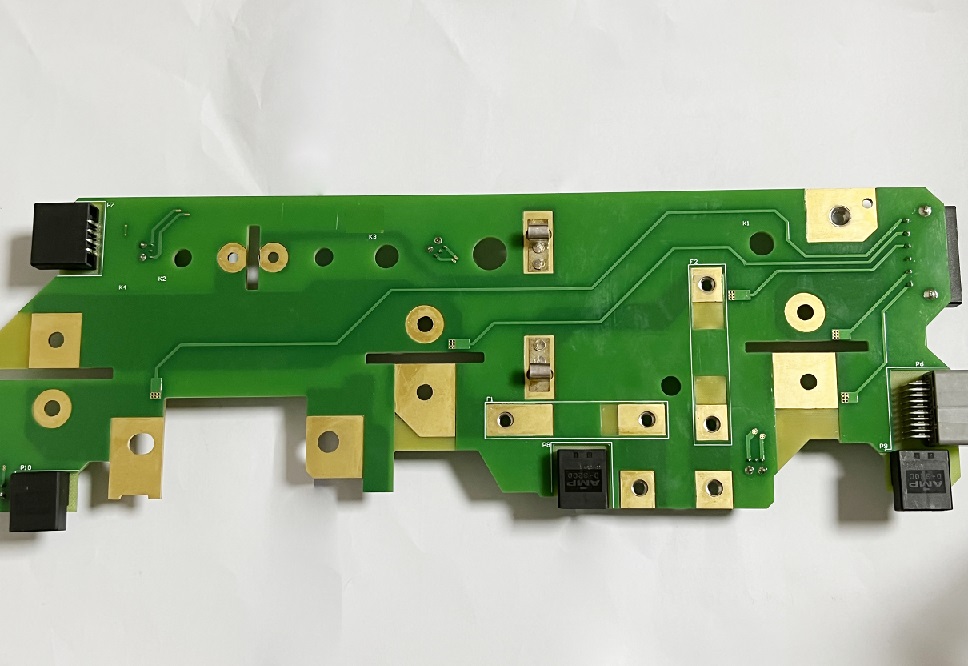
Heavy Copper PCBs
With thicker copper layers, typically 3 ounces per square foot or more, these PCBs can handle higher currents and enhance thermal management. They’re used in power distribution, automotive, and industrial applications where durability and performance are critical. Heavy copper PCBs ensure reliable operation under high-stress conditions.
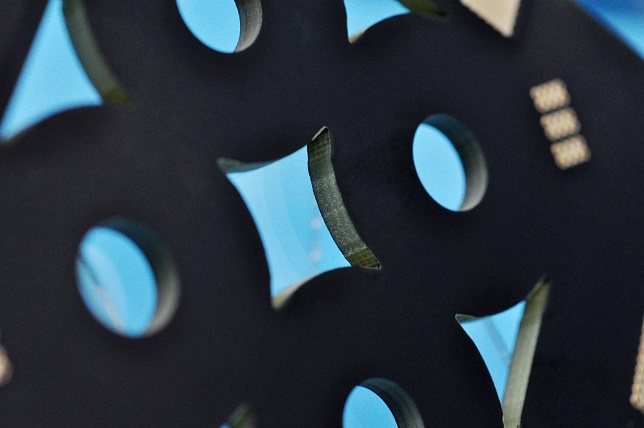
HDI (High-Density Interconnect) PCBs
These feature finer lines and spaces, smaller vias, and higher connection pad density. They’re used in advanced electronics like smartphones, tablets, and medical devices where space and performance are paramount. HDI PCBs enable miniaturization and improved electrical performance.
Extra Thin PCBs
Designed with minimal thickness, these PCBs are perfect for fitting into compact and lightweight devices. You’ll find them in flexible displays, wearables, and miniaturized electronic gadgets. Extra thin PCBs allow for innovative design solutions and space-saving configurations.
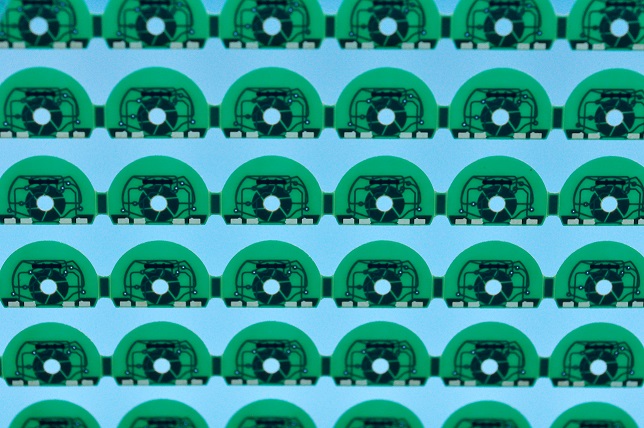
RF (Radio Frequency) PCBs
Optimized for high-frequency signals, these are used in communication devices, antennas, and microwave applications. They’re designed to minimize signal loss and interference, ensuring optimal performance in wireless communication systems.
High Tg PCBs
These have a high glass transition temperature, making them suitable for high-temperature environments. Used in automotive, aerospace, and industrial applications, high Tg PCBs maintain structural integrity and performance at elevated temperatures.
Impedance Control PCBs
These are designed to maintain consistent impedance for high-speed signal transmission. They’re used in communication devices, high-speed digital circuits, and advanced computing systems. Impedance control PCBs ensure signal integrity and reduce signal loss and reflection.
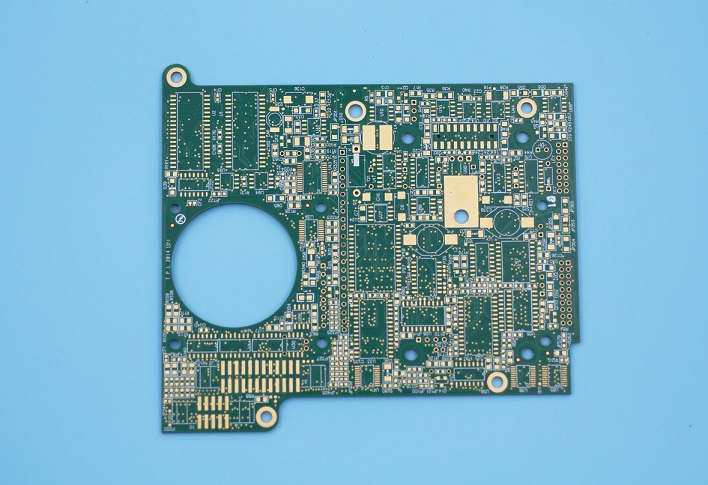
Why Are PCB Boards So Expensive?
Material Quality
High-grade materials like FR4 (fiberglass), ceramics, and high-quality copper foil are used to ensure durability and performance. These materials are essential for withstanding environmental stress and ensuring reliable operation, but they are expensive. For example, ceramic substrates can cost up to 10 times more than standard FR4 materials due to their superior thermal conductivity and electrical properties.
Complexity of Design
Multi-layer PCBs and advanced designs such as HDI (High-Density Interconnect) boards require complex manufacturing processes. The process involves precise alignment of layers and sophisticated techniques like laser drilling for micro-vias. The added complexity increases the production costs significantly. For instance, a standard 4-layer PCB might cost $50 per square meter, while a 12-layer HDI PCB could cost over $200 per square meter.
Precision and Technology
Manufacturing high-precision PCBs involves advanced machinery for etching, drilling, and plating. This machinery requires significant investment, and the skilled labor needed to operate it adds to the cost. The precision required in the production process ensures that the PCBs meet exacting standards, crucial for high-performance applications. A single advanced PCB drilling machine can cost upwards of $500,000.
Volume of Production
Smaller production runs generally have higher costs per unit because the setup and tooling expenses are spread over fewer units. For example, a low-volume production run of 10 PCBs might cost $100 per board, whereas a high-volume run of 10,000 boards might reduce the cost to $10 per board due to economies of scale.
Testing and Quality Assurance
Rigorous testing, including electrical, thermal, and functional tests, ensures that the PCBs meet strict performance standards. This testing process is vital to ensure reliability, especially in critical applications like medical devices and aerospace. Quality assurance processes can add 20-30% to the overall production cost, but they are essential for maintaining high standards.
What is the Difference Between PCBA and PCB Board?
The terms PCB and PCBA are often used interchangeably, but they refer to different stages of the board’s life cycle. The PCB is the bare board itself, with no electronic components attached. It consists of a non-conductive substrate, copper traces, solder mask, and silkscreen. A PCB serves as the foundation for assembling electronic components.
On the other hand, a PCBA (Printed Circuit Board Assembly) is a PCB that has undergone the assembly process, where all necessary electronic components like resistors, capacitors, diodes, and integrated circuits are soldered onto the board. Essentially, a PCBA is a functional circuit board ready for use in electronic devices. The transition from a PCB to a PCBA involves component placement, soldering, and quality testing, transforming the bare board into an operational assembly. Below is a typical PCBA product for your reference.
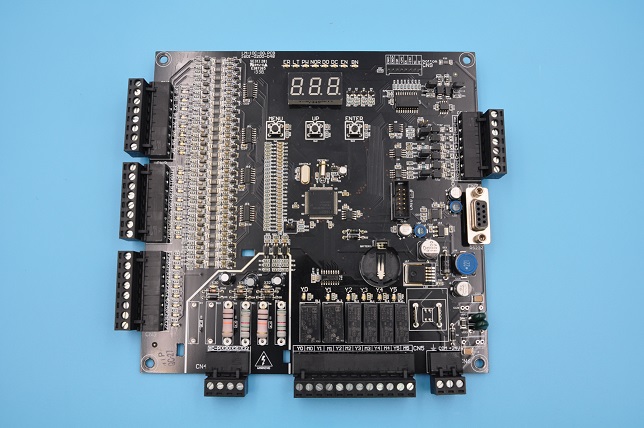
What is PCB Board Common Use?
PCB boards are existing in everywhere what we live, for example, the global smartphone market, which relies heavily on PCBs, was valued at approximately $520 billion in 2020. Here are some common applications that PCB used in:
Automotive Industry
In the automotive sector, PCBs are used in engine control units, infotainment systems, and advanced driver-assistance systems (ADAS). These applications enhance vehicle performance, safety, and connectivity.
Medical Devices
PCBs are integral to medical devices such as diagnostic equipment, patient monitoring systems, and implantable devices. They ensure precise and reliable operation, which is critical for patient safety and effective treatment.
Industrial Applications
PCBs are used in control systems, machinery, and power distribution units in industrial settings. They provide robust and durable solutions capable of withstanding harsh conditions and continuous operation.
Telecommunications
In telecommunications, PCBs are essential in routers, switches, and communication devices, ensuring efficient and reliable data transmission. As the demand for faster and more reliable communication networks grows, so does the need for high-quality PCBs.
Why Are Circuit Boards Green?
The characteristic green color of most PCBs comes from the solder mask, a protective layer applied over the copper traces to prevent oxidation, short-circuiting, and to protect the board during soldering.
The green color is traditional, largely due to historical reasons and practical benefits. Green solder mask provides a good contrast against the white silkscreen and the shiny copper traces, making it easier for technicians to inspect and identify components during assembly and troubleshooting. Additionally, green solder mask was one of the first colors to be developed and standardized in the industry, leading to its widespread adoption. However, PCBs are not limited to green; they can also be found in other colors such as red, blue, black, and white, depending on the specific requirements and aesthetic preferences of the project. The choice of solder mask color does not affect the performance of the PCB, but green remains popular due to its well-established manufacturing process and visual advantages.
How to Get Started with Best Technology?
Here at Best Technology, we are experienced in designing all types of PCBs, including standard rigid PCBs, special PCBs, and irregular PCBs. We can design and develop PCBs according to customer specification and offer suggestions on the right materials for your project.
We provide the full series of PCB manufacturing, from the initial PCB design, PCB layout, to custom PCB fabricate, PCB assembly, box building and so forth. By the way, we have our own factory in Vietnam, that means we can ship out the PCBs directly from Vietnam.
Welcome to contact us when you want to get a quote!
You may also like
Tags:Busbar PCB
Posted in best pcb, bestpcb, Ceramic PCB, FAQ, FR4 PCB, HDI PCB, mcpcb, Metal Core PCB, PCB News, PCB Technology, PCBA, RF Board, Rigid Flex Circuit, Special PCB | No Comments »
FR4 is a commonly used material in the printed circuit boards (PCBs) manufacturing. If you’re in the electronics field, you’ve likely heard of it. It is the footstone of a circuit board, provides good mechanical strengthen and electrical insulation properties. Today, we will share informational about FR4 material, its types, advantages and alternatives. Keep reading if you are interested in.
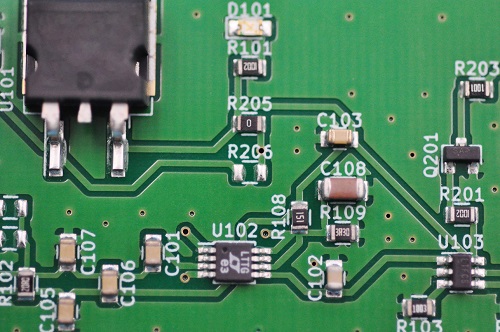
What does FR4 stand for?
FR4 stands for “Flame Retardant 4”, also called FR-4 Epoxy Glass Cloth by PCB manufacturers. It is not a material name, but a material grade, so there are many types of FR-4 grade materials used in general circuit boards. But most are composites made with so-called Tera-Function epoxy resins plus fillers and glass fibers. FR4 is made from woven glass-reinforced epoxy resin. The typical composition of FR4 includes approximately 60% glass fabric and 40% epoxy resin by weight.
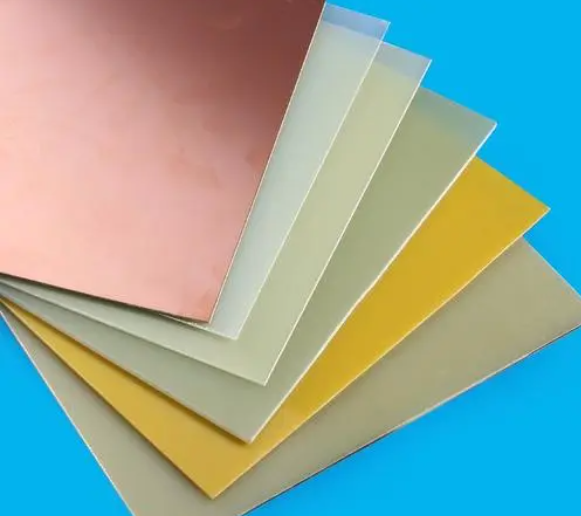
This composite material is known for its high mechanical strength and flame-retardant properties. The “4” in FR4 signifies the level of flame retardancy. It means the material is resistant to catching fire, which is critical in preventing electrical fires in electronic devices.
What are the classifications of FR4 materials?
FR4 materials are classified based on various properties and specifications to cater to different applications and requirements. These classifications help in selecting the right type of FR4 material for specific PCB needs. Here are the primary classifications of FR4 materials:
1. Standard FR4
Standard FR4 is the most commonly used classification. It offers a good balance of electrical insulation, mechanical strength, flame retardancy, and cost-effectiveness. Standard FR4 materials have a glass transition temperature (Tg) typically around 130°C to 140°C. They are suitable for general-purpose PCBs used in consumer electronics, industrial controls, and telecommunications equipment.
2. High Tg FR4
High Tg FR4 materials are designed for applications requiring higher thermal performance. These materials have a higher glass transition temperature, usually above 170°C. High Tg FR4 is used in applications where the PCB is exposed to higher temperatures, such as automotive electronics, aerospace, and high-power devices. The increased Tg provides better stability and performance at elevated temperatures. This is the high Tg FR4 PCB that we made before.
3. Low Dk FR4
Low Dk (Dielectric Constant) FR4 materials are used in high-frequency applications where signal integrity is crucial. So, we called it as “High-frequency FR4”. These materials have a lower dielectric constant, which reduces signal loss and improves signal transmission. Low Dk FR4 is often used in RF and microwave circuits, where maintaining signal integrity is essential.
4. High CTI FR4
High CTI (Comparative Tracking Index) FR4 materials have an improved resistance to electrical tracking. These materials are used in applications where the PCB is exposed to high voltages and harsh environments. High CTI FR4 provides better insulation and reduces the risk of electrical failure due to tracking.
5. Halogen-Free FR4
Halogen-free FR4 materials are designed to meet environmental and safety requirements by eliminating halogens. Which can be harmful if released during PCB manufacturing or disposal. These materials are used in applications where reducing environmental impact is a priority. Halogen-free FR4 offers similar performance to standard FR4 but without the use of halogenated flame retardants.
Benefits of using FR4 as PCB material
- Excellent Electrical Insulation
- High Mechanical Strength
- Flame Retardancy
- Moisture Resistance
- Cost-Effectiveness
- Thermal Stability
- Ease of Fabrication
Properties of FR4 material
| Property | Parameter |
| Vertical flexural strength | Normal State: E-1/150, 150±5℃≥340Mpa |
| Parallel layer impact strength | ≥230KJ/m |
| Insulation resistance after water immersion (d-24/23) | ≥5.0×108Ω |
| Vertical electrical strength | ≥14.2MV/m |
| Parallel layer breakdown | ≥40KV |
| Relative Dielectric Constant (50hz) | ≤5.5 |
| Relative Dielectric Constant (1mhz) | ≤5.5 |
| Dielectric Loss Factor (50hz) | ≤0.04 |
| Dielectric Loss Factor (1mhz) | ≤0.04 |
| Water Absorption (D-24/23, 1.6mm Thickness) | ≤19mg |
| Density | 1.70-1.90g/cm³ |
| Flammability | FV0 |
What is the Difference Between IMS and FR4 PCB?
IMS (Insulated Metal Substrate) and FR4 PCBs serve different purposes. IMS PCBs are designed for applications requiring efficient heat dissipation. They have a metal base layer that helps manage heat more effectively than FR4. This makes IMS ideal for high-power applications like LED lighting.
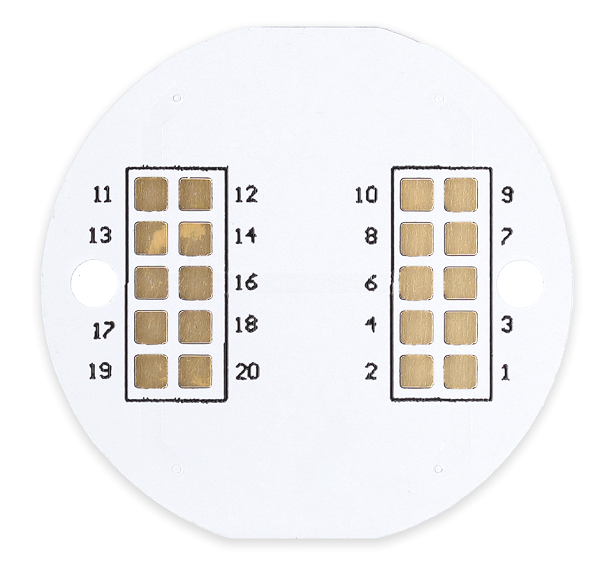
On the other hand, FR4 PCBs are used in general electronic applications due to their balance of performance and cost. While IMS excels in thermal management, FR4 is preferred for its electrical properties and versatility.
What is the Cost of FR4 PCB Per Square Inch?
The cost of an FR4 PCB can vary based on several factors. These include the board’s thickness, the number of layers, and the complexity of the design. On average, the cost per square inch of FR4 PCB ranges from $0.10 to $0.50. However, this is a rough estimate. For a precise quote, it’s best to contact PCB manufacturers with your specific requirements. If you are searching for a PCB supplier, Best Technology is here to waiting for you.
Why is Rogers Better Than FR4 Material?
Rogers material is often considered superior to FR4 in high-frequency applications. Here are some key reasons why Rogers might be chosen over FR4.
- Lower Dielectric Loss
- Higher Thermal Conductivity
- Improved Dimensional Stability
- Consistent Dielectric Constant
- Superior Performance in High-Frequency Applications
- Compliance with Stringent Industry Standards
What Material is Similar to FR4?
Several materials are similar to FR4 and can be used as alternatives. One such material is CEM-1, which is also a composite material made from epoxy and fiberglass. It offers good mechanical strength and electrical properties but is less flame retardant than FR4.
Another alternative is polyimide, known for its excellent thermal stability and flexibility. It is often used in applications requiring high-temperature resistance. However, polyimide is more expensive than FR4. For specific applications, materials like PTFE (Teflon) can also be considered, especially in high-frequency applications.
FAQs
1. Can FR4 be used in high-temperature applications?
FR4 can withstand moderate temperatures, but for high-temperature applications, materials like polyimide are preferred.
2. Is FR4 environmentally friendly?
FR4 is not biodegradable but can be recycled to some extent. Proper disposal and recycling methods should be followed.
3. How does the thickness of FR4 affect PCB performance?
The thickness of FR4 can impact the board’s mechanical strength and thermal dissipation. Thicker boards offer more durability but may also increase the cost.
4. Are there any disadvantages to using FR4?
FR4 has limitations in high-frequency and high-temperature applications. It is also less effective in thermal management compared to materials like IMS.
5. Can FR4 PCBs be used in flexible circuits?
FR4 is rigid and not suitable for flexible circuits. For flexible applications, materials like polyimide are used. But recently, Best Technology developed a new product called “semi-flexible FR4 PCB”, its flex area is made by FR4 material.
- Is FR4 RoHS Compliant?
Yes, FR4 is RoHS compliant. This means that it meets the regulations set by the European Union to limit the use of specific hazardous materials found in electrical and electronic products.
- What is FR4 Tg?
The glass transition temperature (Tg) of FR4 is a critical property that indicates the temperature at which the material transitions from a hard, glassy state to a soft, rubbery state.
Best Technology excels not only in PCB and assembly manufacturing, but also in offering top-quality PCB design services. Our professional engineering team is ready to support your innovation across various industries, including communications, healthcare, industrial, and consumer electronics. We welcome all the questions or inquiries from you.
You may also like
Tags:FR4 Material, high tg pcb, rogers pcb
Posted in best pcb, bestpcb, FAQ, FR4 PCB, mcpcb, Metal Core PCB, PCB News, PCBA, SMT Technology | No Comments »
During July 8th to 10th, Best Technology had an exhibition at the Electronica China 2024, and now, we are so excited to share that we had an incredible time! It was our first time at this event, and we believe it is not the last time.
It is must to say that the Electronica the perfect place for us to show off our cutting-edge PCB products. Our booth was buzzing with visitors curious about our advancements in metal core PCBs, ceramic PCBs, flexible PCBs and PCB design. We were thrilled with the positive feedback and the high interest in what we had to offer.

The exhibition wasn’t just about our products; it was also about making meaningful connections. We got to chat with industry experts, potential clients, and fellow exhibitors, discussing the latest trends and exploring possible collaborations. These conversations were incredibly valuable, and we’re excited to keep these relationships growing.
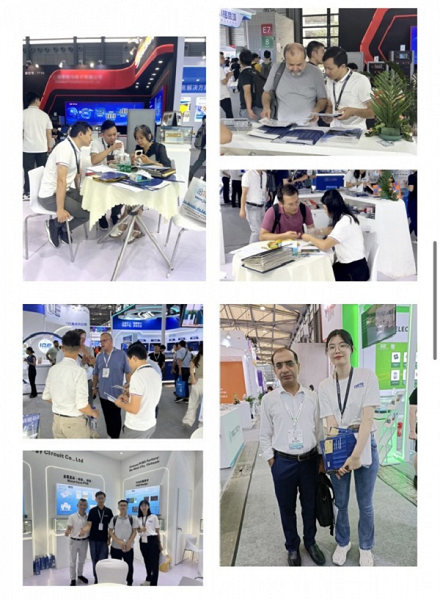
At this exhibition, Best Technology also attracted the attention of authoritative media such as CCTV (China Central Television). It is a big and famous media in China. CCTV reporter visited our booth and conducted an interview with our founder, Peter. During the interview, Peter introduced the company’s latest products and technical advantages in detail, and shared the successful experience and future development plan of Best in the industry.
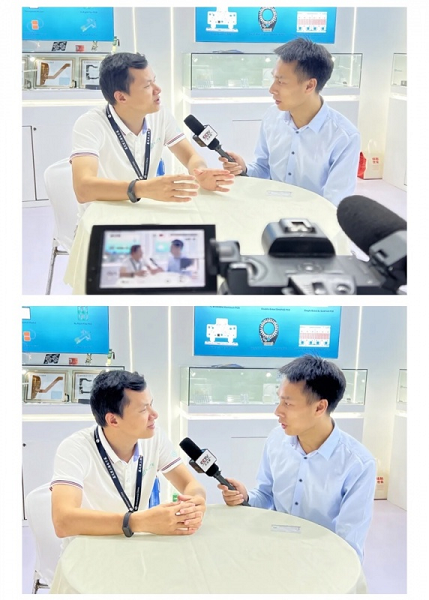
We want to send a huge thank you to all the friends and visitors who stopped by our booth. Your support and interest mean so much to us. Your enthusiasm for our products has motivated us to keep pushing the boundaries and coming up with even better solutions.
If you didn’t get a chance to see us at Electronica China 2024, don’t worry! We’ve got more exciting exhibitions lined up. You can catch us at PCB West in October and in Munich, Germany in November. We can’t wait to meet more industry pros and show off our latest innovations at these events.
Best Technology’s debut at Electronica China 2024 was a big success. We’re so grateful for the opportunity to share our products and connect with the industry community. Thanks again to everyone who visited our booth. We look forward to seeing you at our upcoming exhibitions!
You may also like
Posted in best pcb, bestpcb, Ceramic PCB, mcpcb, Metal Core PCB, Our News | No Comments »
Ceramic PCB is a type of emerging PCB in the recent years, they are known for their high thermal conductivity and low expansion coefficient. Except this, it has numerous advantages that normal FR4 PCB can not achieved. And even for metal core PCB (MCPCB). Today, we are going to introduce their characteristics in detail.
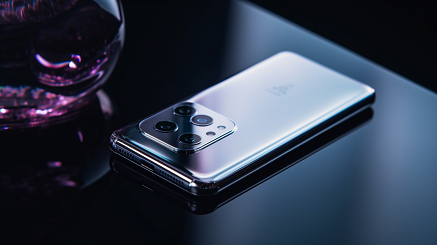
1. High thermal conductivity
The core metal content of ceramic circuit boards is as high as 96-98%, which makes them have extremely high thermal conductivity. Compared with ordinary FR4 circuit boards, the thermal conductivity of ceramic circuit boards can reach 170-230 W/mK, while the thermal conductivity of FR4 boards is usually only 0.3-0.4 W/mK. Higher thermal conductivity allows for more efficient heat dissipation, avoiding the problem of damage to electronic components due to overheating. This is particularly important in high-power applications, such as LEDs and power semiconductors.
2. Low thermal expansion coefficient
Ceramic materials have a very low coefficient of thermal expansion (CTE), usually between 6-8 ppm/°C. In contrast, FR4 material has around 14-16 ppm/°C CTE. This means that ceramic materials hardly expand or contract when temperature changes. The low thermal expansion coefficient improves the reliability of the circuit board, reduces the influence of the thermal cycle on the circuit board structure and the connection of electronic components. Especially suitable for use in the environment with frequent temperature changes.
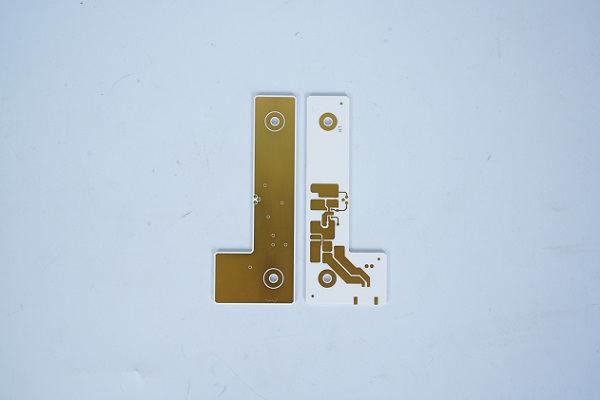
3. High surface hardness
The surface hardness of ceramic materials is up to 9 Mohs, which is harder than aluminum oxide and silicon. It means ceramic PCB has more wear-resistant, scratch resistant, and not easy to damage. It enables to run stably for a long time even in harsh physical environments, extending the service life of the board. That is why ceramic PCB is always recommended to use in military.
4. High compressive strength
The compressive strength of the ceramic circuit board can reach 450-500 MPa, which can withstand large mechanical pressure without deformation or rupture. This characteristic makes them excellent in applications that require them to withstand mechanical stress, such as industrial automation and aerospace.
5. High dielectric strength
Ceramic PCB has very high dielectric strength, usually between 15-25 kV/mm. And it can withstand higher electric fields without electrical breakdown.
6. Ability to withstand higher temperatures
Ceramic circuit boards can operate at temperatures up to 1000°C without degradation or damage. While FR4 circuit boards typically operate at an upper limit of 140-170°C. Ceramic circuit boards are suitable for electronic devices in high temperature environments, such as electric vehicles and high-power lasers.
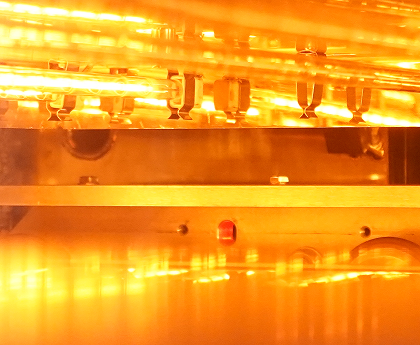
7. High breakdown voltage
The high breakdown voltage of the ceramic circuit board can reach 20-35 kV, ensuring reliable operation under high voltage conditions. It is well suitable for use in high-voltage power supplies and power electronic equipment, providing higher safety.
8. Does not absorb water
The water absorption of ceramic materials is usually less than 0.1%, while the water absorption of FR4 materials is 0.1-0.2%. The non-water absorbing feature prevents performance degradation and damage caused by water absorption in a humid environment. It is ideal for Marine, medical, and other applications that require moisture resistance.
9. Low loss at high frequency
In high-frequency applications, the dielectric loss Angle tangent (Df) of ceramic circuit boards is usually between 0.0001-0.001, while the loss Angle tangent of FR4 materials is 0.02-0.03. Low loss ensures signal integrity and transmission efficiency, which is suitable for communication equipment and high-frequency electronic equipment.
10. Resistance to cosmic rays
Ceramic materials can resist the impact of cosmic rays, will not be degraded or damaged by rays. They are suitable for satellite electronic equipment, ensuring the stability and reliability of the circuit board in a high radiation environment.
11. No organic ingredients
Ceramic circuit boards do not contain organic components, so they have high chemical stability, are not susceptible to chemical corrosion and decomposition. They are good choice to use in harsh chemical environments.
12. High-density assembly
Ceramic circuit boards support high-density assembly with line/pitch resolution of 20 microns. This allows them to be adapted to more complex and refined circuit designs, suitable for microelectronics and high-precision applications.
Best Technology provides professional one-stop ceramic PCB design and manufacturing service all around the world. We welcome all the friends and partners from domestic and abroad to visit our ceramic circuit board workshop.
You may also like
Tags:advantages of ceramic pcb, ceramic pcb deisgn
Posted in best pcb, bestpcb, Ceramic PCB, DBC substrate, Design Guide, FR4 PCB, Metal Core PCB, Special PCB | No Comments »
Nowadays, LED lighting has become increasingly popular in our daily life. With its rapidly rise in popularity, the term LED PCB has become commonplace. LED PCB also referred to as LED circuit board, LED aluminum PCB, or simply LED PCB board. Today, our team will share some informational knowledges about LED PCB circuit board, let’s keep reading if you are interested!
What is a LED PCB Circuit Board?
A LED PCB circuit board is a unique type of board crafted to hold and connect light-emitting diodes (LEDs). They are specially designed for lighting applications, like LED car headlights, pool lighting, UV LED, hotel lighting, grow light, high bay lights, stair lights, supermarket lighting, street light, etc. They are used almost everywhere. These boards provide the support and connections needed for LEDs to function efficiently and last longer. They are crucial in areas like lighting, automotive, and electronics, thanks to their ability to manage heat effectively and enhance the lifespan of LEDs.
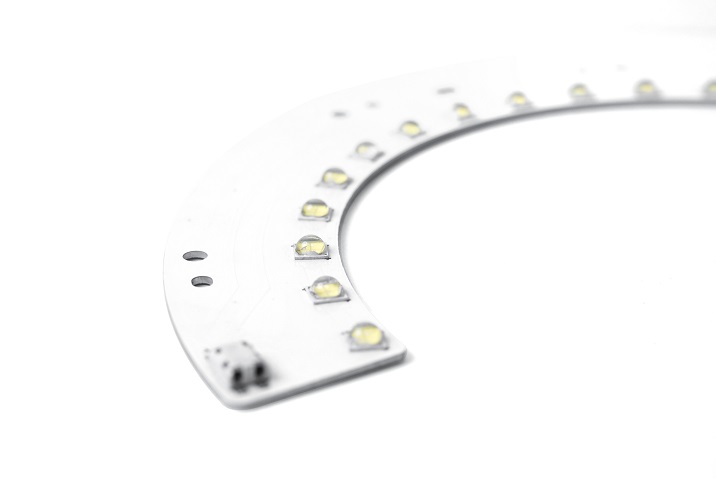
What are the Different Types of LED PCB?
LED PCB boards are preferred over traditional lighting methods like fluorescent and incandescent bulbs. There are in total five types of LED PCBs, each designed for specific applications:
- Aluminum based LED PCB
An LED PCB board, often made of aluminum alloy, serve as the base for mounting LEDs. This is the most common type of LED PCB, since it has good thermal management and cost-effective compared to other materials. The thermal conductivity of aluminum can be 1.0-3.0W/m.k, it can meet the almost heat requirements of low-middle power applications, like streetlights and floodlights. Additionally, Best Technology developed a new product called semi-flexible aluminum PCB for specific device. It can be bent and folded when necessary.
- Copper core LED PCB
Copper core LED circuit board can be divided into two types: normal copper core LED PCB and thermoelectric separation copper-based LED PCB. The copper material has higher thermal conductivity than that of aluminum, and it can up to 400W/m.k when made by thermoelectric separation technology. Copper based LED PCB board commonly used in high power devices like new energy vehicles.
- Ceramic LED PCB
Ceramic LED PCB boards are made from ceramic substrates like aluminum oxide (Al2O3) or aluminum nitride (AlN). They have superior thermal management, and it can withstand extreme environment when used in high-temp and low temperatures. Ceramic substrates can handle high power and thermal cycling better than other materials, making them ideal for automotive, aerospace, and high-power LED applications.
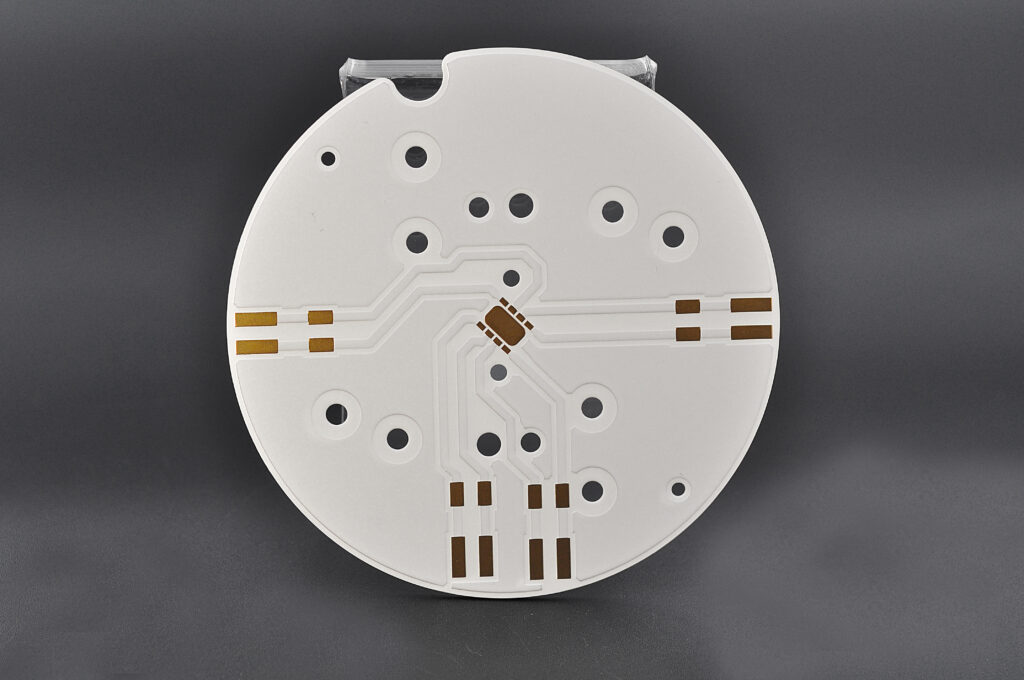
- FR4 LED PCB
FR4 LED PCB boards are made from woven fiberglass cloth with an epoxy resin binder, which provides good mechanical strength and insulation properties. FR4 is a widely used material for general-purpose PCBs due to its cost-effectiveness and versatility. While it has lower thermal conductivity (around 0.3W/m.k) compared to aluminum or copper, FR4 LED PCBs are suitable for low to medium power applications where thermal management is less critical. These PCBs are commonly used in consumer electronics, LED displays, and indoor lighting.
- Flexible LED PCB
Flexible LED PCB boards are constructed using flexible plastic substrates like polyimide or polyester. This flexibility allows the PCBs to be bent, folded, and shaped to fit various applications. Flexible LED PCBs are ideal for products that require dynamic or complex designs, such as wearable electronics, flexible displays, and medical devices. Despite their lower thermal conductivity compared to rigid PCBs, flexible LED PCBs offer unique design advantages and are increasingly used in innovative LED applications.
What are the Benefits of Using Aluminum LED PCB Boards?
Aluminum LED PCB boards offer numerous advantages that other materials cannot achieved.
1. Better Heat Management: LED PCBs, particularly aluminum ones, help in cooling LEDs, preventing overheating and extending their lifespan.
2. Compact and Light: These boards are small and lightweight, making them perfect for applications with space and weight constraints.
3. Dimensional stability: Aluminum LED PCB board has good dimensional stability compared with flexible LED PCBs. And it has low CTE during the manufacturing.
4. Cost-Effective: Producing aluminum LED PCBs is relatively affordable, making them a budget friendly option for various applications.
5. Versatile: Available in different shapes and sizes, Aluminum LED PCBs can be customized to meet specific needs, enhancing their usefulness in various scenarios.
The Structures of a LED PCB Board in Manufacturing?
A LED PCB is similar to traditional rigid board, the only one difference is the LED mounting on the pads. Herein, we listing the basic composition of a LED pcb board, let’s see it together.
1. Substrate – The base of the PCB, which can be flexible (like polyimide), metal alloy (aluminum, copper), or ceramic, depending on the required thermal performance.
2. Copper foil – A thin layer of copper is used for forming the circuit paths on the PCB.
3. Solder mask – This is a protective layer covers the copper paths to prevent oxidation and short circuits. It also aids in SMT (surface mounted technology) soldering.
4. Silkscreen – Used to print labels, logos, vendors, symbols, and pick and place on the PCB for easy identification during assembly.
5. Adhesives – Aiming to bond different PCB layers, different material used different adhesive, always are prepreg (PP).
6. LEDs: The main components mounted on the PCB, available in various sizes, colors, power ratings, voltages and so on.

Your Reliable LED PCB Board Manufacturer – Best Technology
Best Technology stands out as a leading manufacturer of high-quality LED PCB boards. We offer a wide range of products and services to cater to various needs. With extensive experience and expertise in the industry, we are committed to providing reliable and cost-effective solutions.
- Advanced Facilities
We are equipped with advanced machinery and technology, ensuring precision and efficiency in production.
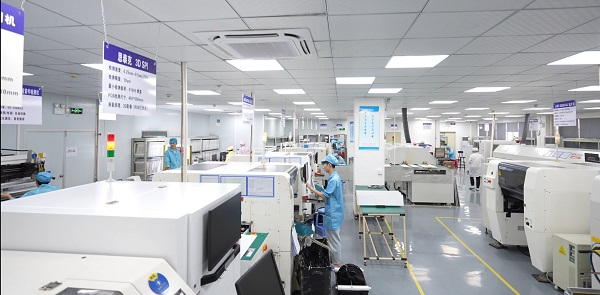
- Experienced Team
Our skilled professionals are dedicated to delivering topnotch LED printed circuit boards. Most of our core members has more than 10 years-experience in the PCB manufacturing.
- Quality Assurance
We have passed ISO9001, ISO13485, IATF16949 certifications, and integrated them into our daily manufacturing process. These strict quality control measures can make sure every product meets the highest standards of industry.
- Customization
We offer tailored customized LED PCB board solutions to meet customer specific requirements.
- Competitive Pricing
Best Technology has our own factory in China and Vietnam, we can provide most affordable solutions without compromising on quality.
Choosing Best Technology means opting for excellence, reliability, and superior service. Partner with us for your LED PCB needs and experience the difference we bring.
You may also like
Tags:flex LED PCB, LED aluminum pcb, LED circuit board, LED flexible PCB, led pcb board
Posted in best pcb, bestpcb, Ceramic PCB, mcpcb, Metal Core PCB, Our News, PCB News, PCB Technology | No Comments »
PCB design is one of an important process before the PCB manufacturing, it determines the overall performance of the whole product. We are an experienced PCB design and manufacturing vendor, with our professional technical team and advanced evaluated tools, we can make sure the PCB design one-time success. Today, we shared a example of fiber optical SFP modules design:
32X100G(QSFP28) large capacity convergence shunt
[1]: Marvell: 98CX8522
[2]: Single pair differential line, 25G optical network
[3]: 16 layers PCB
How to design a SFP optical module PCB?
SFP optical module interface PCB design depends on many aspects, including interface signal processing, timing control, power management and so on.
1. Determine the interface standard: SFP optical module interface standards, such as SFP, SFP+, QSFP and so on, you need to choose the appropriate interface standard according to the specific needs.
2. Choose the chip solution: According to the interface standard, choose the appropriate chip solution, usually including constant voltage source, amplifier, comparator, clock generator, EEPROM, etc.
3. Signal processing: For receiving and sending signals, filtering, amplification and comparison are required to ensure signal quality and stability.
4. Timing control: The timing and frequency of the clock signal need to be accurately controlled to ensure the correctness and stability of data transmission.
5. Power management: SFP optical module interface requires multiple power supplies, including Vcc, VCC-TX, VCC-RX, etc. Reasonable power management is required to ensure the stability and reliability of the power supply.
6. PCB design: According to the above requirements, PCB design is carried out, considering signal isolation, layering layout, status separation, signal integrity and other factors.
Feel freely to send message us if you are interested in PCB design.
You may also like
Tags:pcb design
Posted in best pcb, bestpcb, Design Guide, FAQ, FR4 PCB, HDI PCB, mcpcb, Metal Core PCB, PCB News, PCB Technology | No Comments »
In the design of electronic devices and systems, power distribution and heat dissipation management are key factors. Bus bar PCB, as an efficient solution, is particularly outstanding in these aspects. In this article, we would like to introduce the advantages of Bus bar PCB and its applications in different industries.
What Is A Bus Bar PCB?
At the beginning, we should know what a bus bar PCB is. The Bus bar PCB is a special and newest design that integrates the FR4 material and metal alloy into a whole product, which allows the current transfer path into the circuit board. Due to the current carry capacity and special shape, it also called busbar PCB, embedded bus bar PCB, extruded copper PCB, copper inlay PCB, copper extrusion PCB.
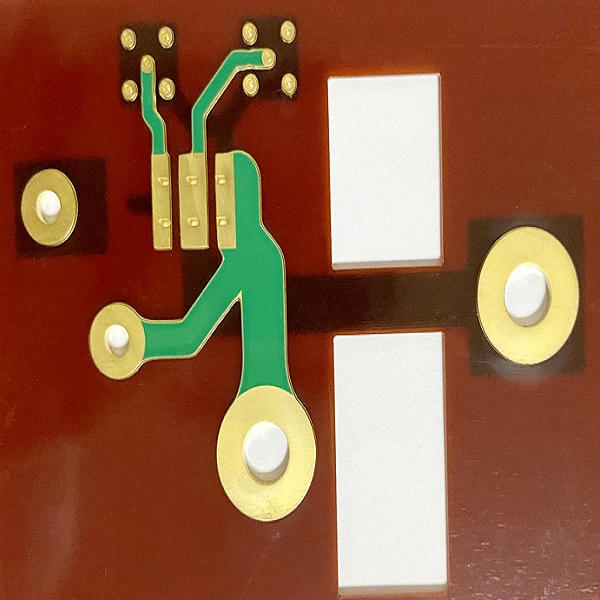
Bus bar circuit board provide a more compact and efficient means of current distribution than traditional wires and cables. This design improves the overall performance of the electronic system by reducing inductance, increasing current carrying capacity, and optimizing heat dissipation.
What Are the Advantages of Bus Bar PCB?
Bus bar PCB offers numerous benefits when be using the power supply applications, its main functions are:
1. Reduce the inductance
Bus bar PCBs reduce inductance by allowing current to flow between tightly spaced conductors. This layout reduces the loop area and thus the inductance value. This is particularly important for high-frequency and highspeed applications, as it reduces voltage spikes and noise, improving system stability and performance.
2. Enhanced current carrying capacity
Due to its large cross-sectional area and high-quality conductive materials, Bus bar PCB can efficiently carry large currents. This is particularly useful in applications that require a large amount of power distribution, such as power supplies, electric vehicles, and renewable energy systems. Bus bar PCBs support higher current density compared to conventional PCB wiring, which improves thermal management and reliability.
3. Improve thermal management
The Bus bar PCB effectively dissipates heat generated by key components. In high power applications, the buildup of heat can affect performance and life. The Bus bar PCB helps maintain optimal operating temperatures through efficient heat distribution, reducing the need for additional cooling mechanisms.
4. Save space and weight
The compact design of the Bus bar PCB reduces the overall size and weight of the electronic components. Its simple construction and elimination of multiple wire connectors contribute to space savings. This is particularly beneficial for applications where size and weight are critical, such as the aerospace and automotive industries.
5. Improved reliability and durability
Bus bar PCBS have superior mechanical strength and durability compared to traditional wiring systems. Its robust construction and secure connections reduce the risk of loose connections, failure due to vibration, and mechanical wear. This improves system reliability and service life for harsh environments and demanding applications.
6. Simplify assembly and maintenance
Using a Bus bar PCB simplifies the assembly process because it reduces the number of individual wires and connectors. This not only speeds up installation, but also reduces assembly errors. In addition, the Bus bar PCB provides a more orderly and accessible layout for easy troubleshooting and repair.
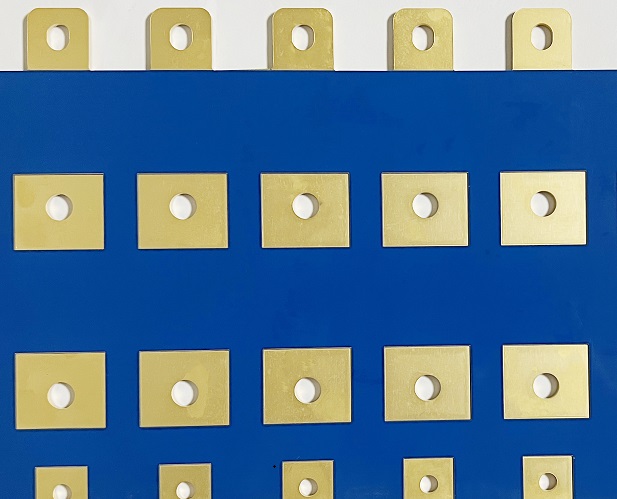
7. Cost effective
Although there may be a high initial cost, Bus bar PCBs can provide cost savings in the long term. Its advantages in reduced inductance, improved thermal management and enhanced reliability reduce operating and maintenance costs. In addition, Bus bar PCB reduces the need for addons, such as heat sinks or complex wiring bundles, thereby increasing overall cost effectiveness.
What Applications of Bus Bar PCB?
Due the high current carry capacity of the bus bar PCB, makes it very suitable for power supply or power management devices. Bus bar PCB can perform well in such fields. Here are some common application examples that bus bar PCB can be used for. If you are seeking for a PCB to integrate into your power supply project, then bus bar PCB is the go-to-choice.
1. Power Electronics
In power converters, inverters and high-current power supplies, Bus bar PCBS are widely used because of their ability to efficiently handle high currents and excellent thermal performance.
2. The Automobile industry
Another popular field that bus bar PCB used in is automotives, especially in electric vehicles (EVs) and hybrid electric vehicles (HEVs). In the electric cars, it can be used for battery connectivity and power distribution, contributing to weight reduction and performance improvements.
3. Renewable energy
Bus bar PCB is an environment friendly material, it is often used in solar systems, wind turbines and energy storage solutions to manage high currents and enhance reliability.
4. Industrial equipment
In industrial machinery and equipment, Busbar PCB provides powerful and efficient power distribution for motors, drives and control systems.
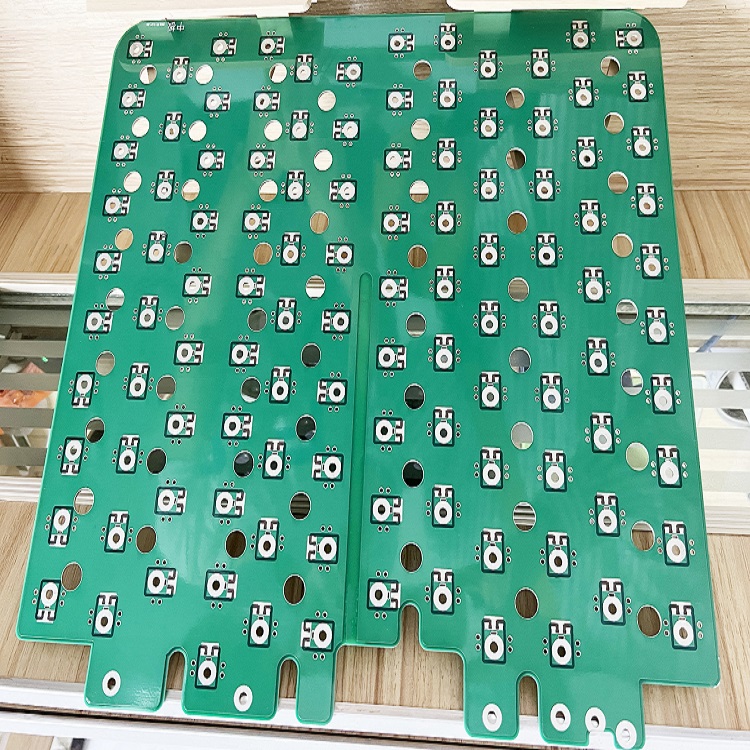
5. Aerospace
Bus bar PCBS are used in aerospace applications, such as avionics and power distribution systems, where size, weight and reliability are key factors.
Final Words
All in all, bus bar PCB offers significant advantages in handling high currents, improving thermal management, and providing reliable power distribution across various applications. By integrating bus bar PCBs, industries can achieve better power management, reduced system size and weight, and improved overall reliability.
Best Technology is a one-stop PCB solution provider in Asia, we offer various kinds of PCBs not only include bus bar PCB, but also Extra thin PCB, RF PCB, HDI PCB, Heavy copper PCB, Ceramic PCB, Metal Core PCB, Flex PCB and rigid flex PCB, PCBA and so more. We have more than 17 years-experience in PCB design and manufacturing, and served more than 1200 customers. Choosing Best Technology as your supplier ensures you get high quality PCBs, helping to improve the performance and competitiveness of your products. Contact us right now to customize your own PCB!
You may also like
Tags:aluminum bus bar pcb, Bus Bar PCB, Busbar PCB, Copper busbar PCB, copper inlay pcb, embeded bus bar pcb
Posted in best pcb, bestpcb, FAQ, FR4 PCB, HDI PCB, mcpcb, Metal Core PCB, PCB News, PCB Technology, RF Board, Rigid Flex Circuit, Special PCB | No Comments »
FR4 material is a highly popular and widely used substrate in the PCB industry due to its exceptional mechanical strength, electrical insulation, and flame retardant properties. It has become the standard for PCB fabrication.
What is FR4 Material and Why is it Used in PCBs?
FR4 is a type of fiberglass-reinforced epoxy laminate. The term “FR4” comes from its flame-retardant properties, meeting the UL94V-0 standard. It is made from woven fiberglass cloth and epoxy resin, which together provide great strength and durability.
Electrical engineers and designers prefer FR4 because of its many benefits, such as:
- Low cost
- High dielectric strength
- Excellent strength-to-weight ratio
- Moisture resistance
- Temperature endurance
- Good electric loss characteristics
- Flame retardance and self-extinguishing capabilities
- Mechanical robustness
- Insulating properties
FR4 is also suitable for marine PCBs because it absorbs very little water. In a standard FR4 PCB, a layer of FR4 is placed between two thin layers of laminated copper.
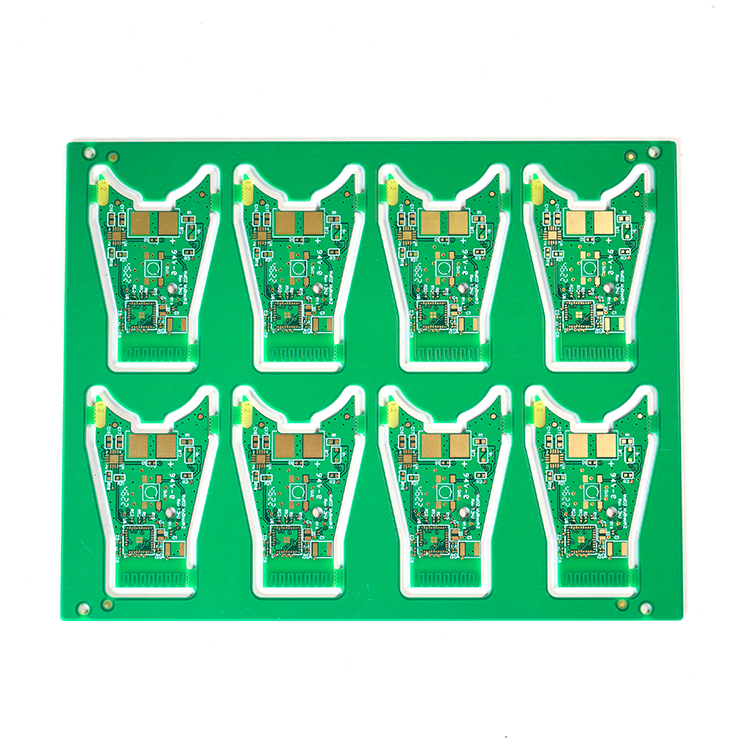
What are the Key Performances of FR4 Material?
FR4 material, also recognized as flame retardant 4, is a composite of glass fabric and epoxy resin, predominantly utilized as a foundational material for printed circuit boards. Familiarity with the specifications of FR4 is crucial for selecting the appropriate substrate for PCB manufacturing. Key specifications include:
1. The thickness of FR4 sheet is usually 0.2 mm to 3.2 mm, and other special thickness also available.
2. The specific gravity of FR4 material is about 1.85g/cm3, which means that it is heavier than water.
3. Coefficient of thermal expansion of FR4 is about 1.0×10^-5cm/cm/℃, which means that its length or width will expand slightly when the temperature changes.
4. The thermal decomposition temperature of FR4 materials is usually between 280C and 320C, which makes it able to withstand high temperature applications.
5. FR4 material has a dielectric constant around 4.0-4.8, which makes it an ideal material for circuit board manufacturing.
6. FR4 has good arc resistance, which means that in the case of high voltage, it can effectively prevent arc discharge.
7. FR4 material good hydrolysis resistance and can maintain good performance even in a humid environment.
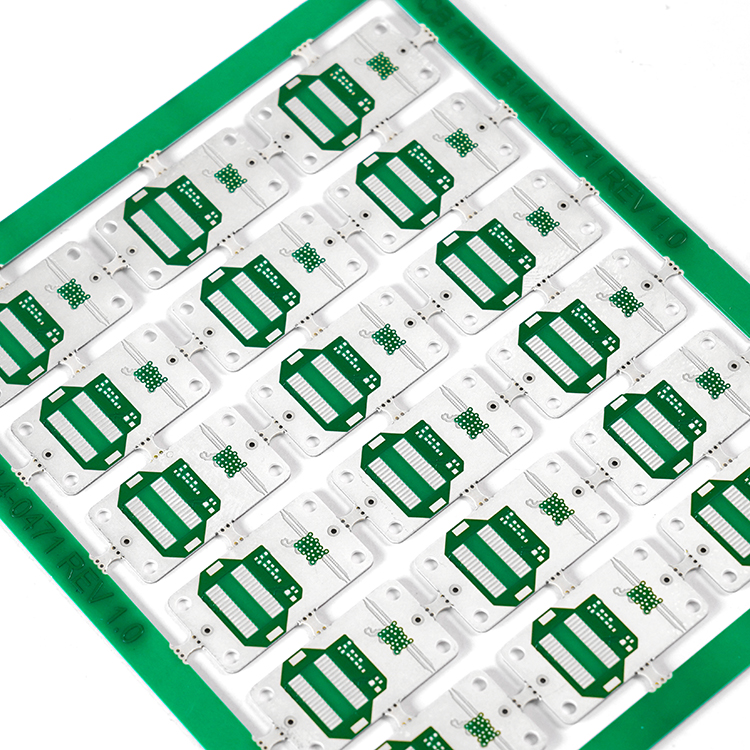
What are the Types of PCB Materials in the Industry?
PCB materials can be broadly categorized based on their composition and intended application. Nowadays, the commonly used are including FR4, polyimide (PI), Metal material (copper or aluminum), ceramic substrate like Al2O3, AlN, Si3N4, and so on. Different materials have its unique functions and well-suited in specific environment. Here we introduce their properties and suited applications simply.
FR4 (Fiberglass Epoxy Laminate)
At present, almost of PCB you seen in the market or electronics used the FR4 material. It widely used because of its superb equilibrium of mechanical strength, electrical insulation, and cost-efficiency. Actually, according to the different reinforcement materials, the circuit board is mainly classified into the following types:
1) FR-4
2) FR-1, FR-2, etc.
3) CEM series: Composite substrate
FR-4 used frequently because of its high fire resistance rating.
High Tg FR4
Though normal FR4 material has good electrical insulation, it is not an ideal option for high frequency circuit board. And then, high Tg FR4 stands out by using an advanced technology. “Tg” refers to glass transition temperature, the juncture at which the material transitions from a rigid, glassy state to a pliable, rubbery state. High Tg FR4 boasts a Tg of 170°C or higher.
Polyimide (PI)
Polyimide materials are renowned for their excellent flexibility, superior thermal stability and chemical resistance. It is always used as raw material of flex circuits, rigid flex circuit boards or membrane switches. Due to the good chemistry properties, they can endure temperatures up to 260°C and are highly flexible, making them ideal for those small and limited PCB designs.
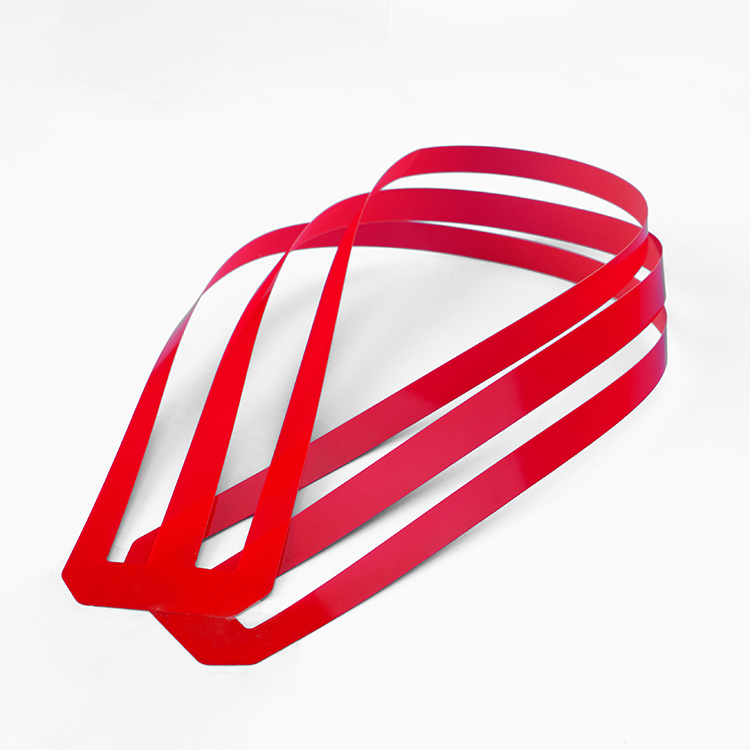
Metal base material
Metal materials always used in metal core PCBs (MCPCB), usually used aluminum core or copper core. The metal base has great thermal conductivity to enhance the thermal management of the device, buy using metal core, the device can dissipate heat away from the critical component such as LED chips, ICs, BGAs, to remain the reliability and performance of the PCB.
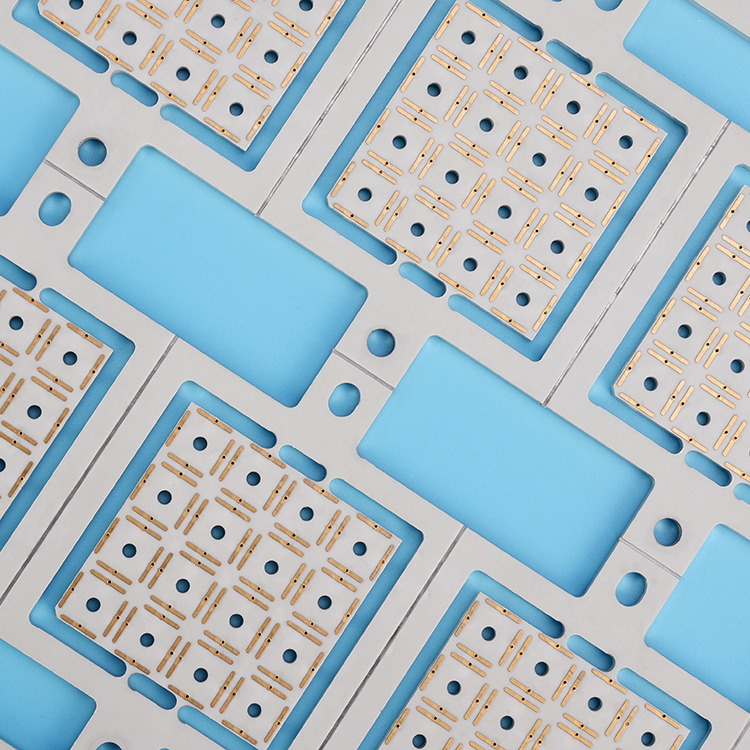
Ceramic substrate
Ceramic PCB substrate offers excellent thermal conductivity and stability than that metal core PCBs, making them suitable for high-power and high-frequency applications. But due to the high cost and complex manufacturing, the ceramic PCB is much expensive than metal core PCB, therefore, they are always be used in high-end applications, such as the military, defense, aerospace and some special fields where requires excellent thermal management.
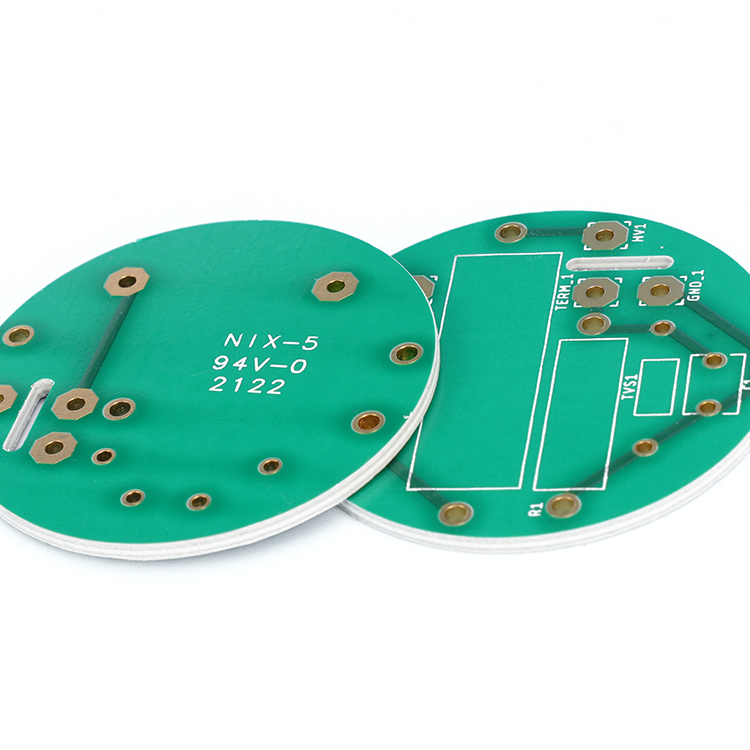
Understanding these materials enable to help engineers and designers in selecting the most appropriate substrate for their projects, ensuring optimal performance and cost-efficiency. Best Technology provides a comprehensive array of PCB materials, guaranteeing high-quality solutions for all your electronic needs.
What are the Applications of FR4 PCB Material in Various Industries?
FR4 material is versatile and finds applications in numerous industries, including:
- Consumer Electronics like smartphones, laptops, and other personal electronic devices.
- Applied in vehicle electronics for infotainment systems, engine control units, and more.
- Industrial Equipment such as control systems, power supplies, and industrial automation.
- Essential for telecommunications, network devices, routers, and communication infrastructure.
- Medical instrumentation and diagnostic equipment.
- Aerospace and defense in avionics, radar systems, and defense electronics.
This is all of this sharing, thanks for your reading. Welcome to contact us if you have other questions about FR4 or other raw materials of PCB. Best Technology engaging in the PCB manufacturing about 18 years, we are one of the leading PCB manufacturers in China. And we have such confidence to provide with you the best PCB and PCBA fast solution for your projects.
You may also like
Posted in best pcb, bestpcb, FAQ, FR4 PCB, mcpcb, Metal Core PCB, PCB News, PCB Technology, PCBA, Rigid Flex Circuit, Special PCB | No Comments »



